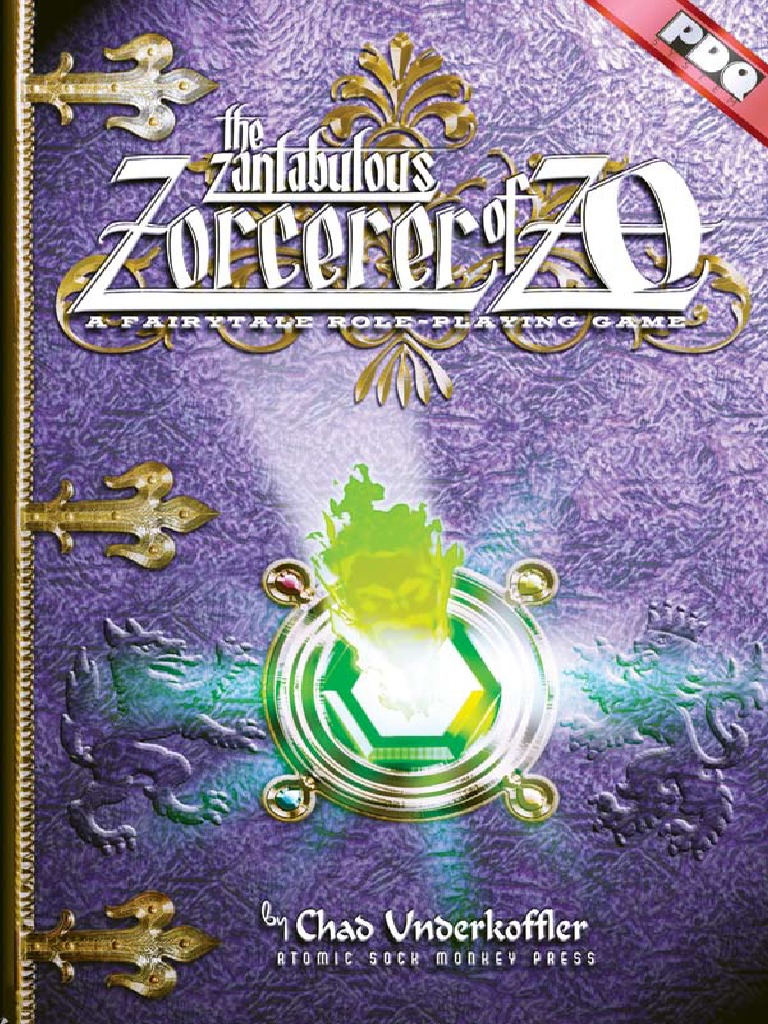I started to feel that I didn’t know roleplaying games well enough so I came up with the plan to read a roleplaying game corebook for every year they have been published. Selection criteria is whatever I find interesting.

The Zantabulous Zorcerer of Zo is a rules-light roleplaying game about fairy tale characters based on the designer Chad Underkoffler’s six-session campaign. Unusually, Underkoffler’s game is very present in the book which includes comments from his players and detailed play reports from each session. There are both original GM notes and descriptions of how the in-game events proceeded.
The land of Zo is a fairytale realm in which lost princes and evil sorcerers abound. It’s ruled by the Zorcerer of Zo, a mysterious and powerful figure, and menaced by the Deathless Wolf, a creature of destruction.
The game’s system has the players defining their characters with attributes such as Imperial Agent or Talking Crocodile, custom-defined for each character. This method is extremely flexible in depicting all kinds of characters, which makes sense given the breadth of choice in this setting.
The two character’s in the campaign the game is based on are a gentleman pig and a crocodile with a digital display on its abdomen.
The text takes extreme care to make the process of how a campaign becomes a game as transparent as possible. We’re always told which ideas were in the original game and which made up for the publication.
Roleplaying games are defined by the fact that they’re played in small groups. It’s only been recently that running games on Youtube and similar platforms has become a big thing, allowing people to have clear common reference points to how other people run their games. Because of this, its easy to assume that the playstyle of your local scene represents a standard. You don’t have too many points of comparison unless you travel and play in different scenes.
For this reason, it’s interesting to read an involved description of a campaign from an alien play culture. From the minutiae, you can see the differences that are ordinarily obscured by rhetoric.
The thing that strikes me in this and many other similar roleplaying games is the way players are assumed to come up with character concepts individually, and then the group tries to fit them together and give them some reason to hang around. This method seems to stress the right of the player to create whatever character they desire within the bounds of the system, with coherence in terms of campaign concept or motivation a secondary concern.
Reading the game, this feels like a fundamental assumption of the type that we are very bad at articulating because we assume it’s a given. Every scene has such assumptions.